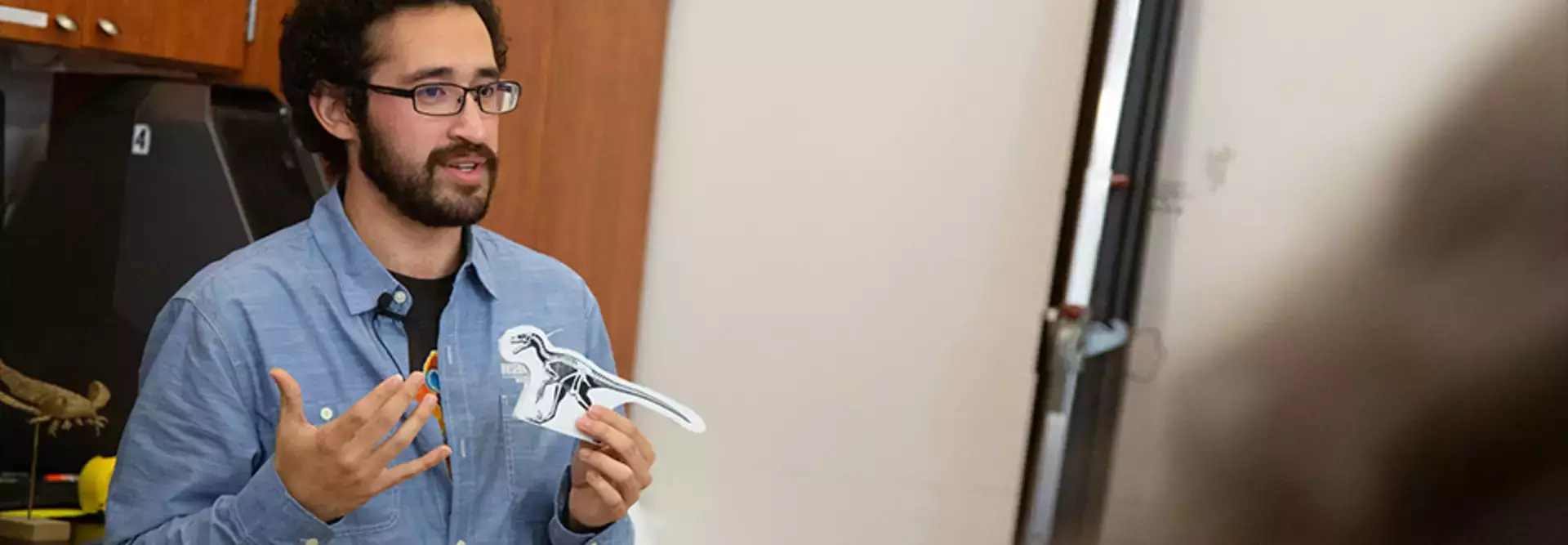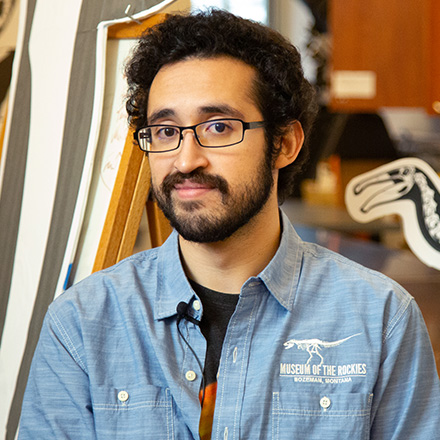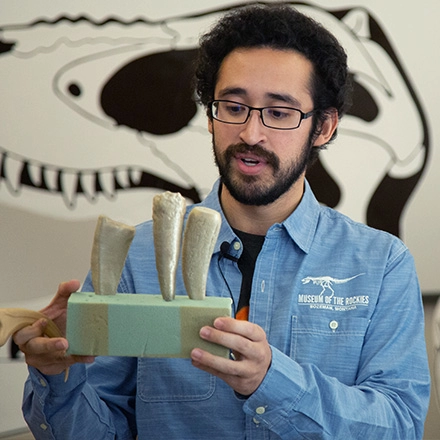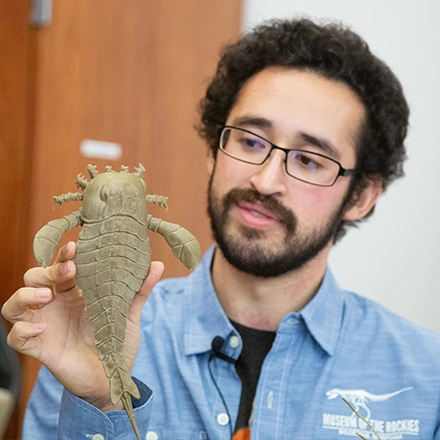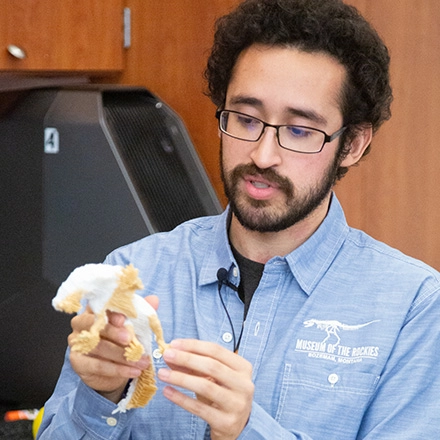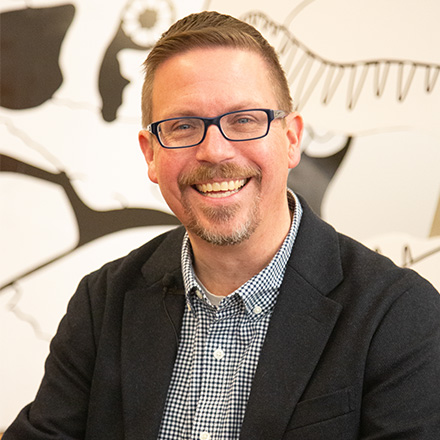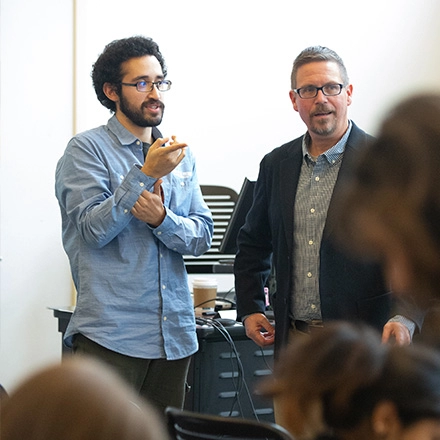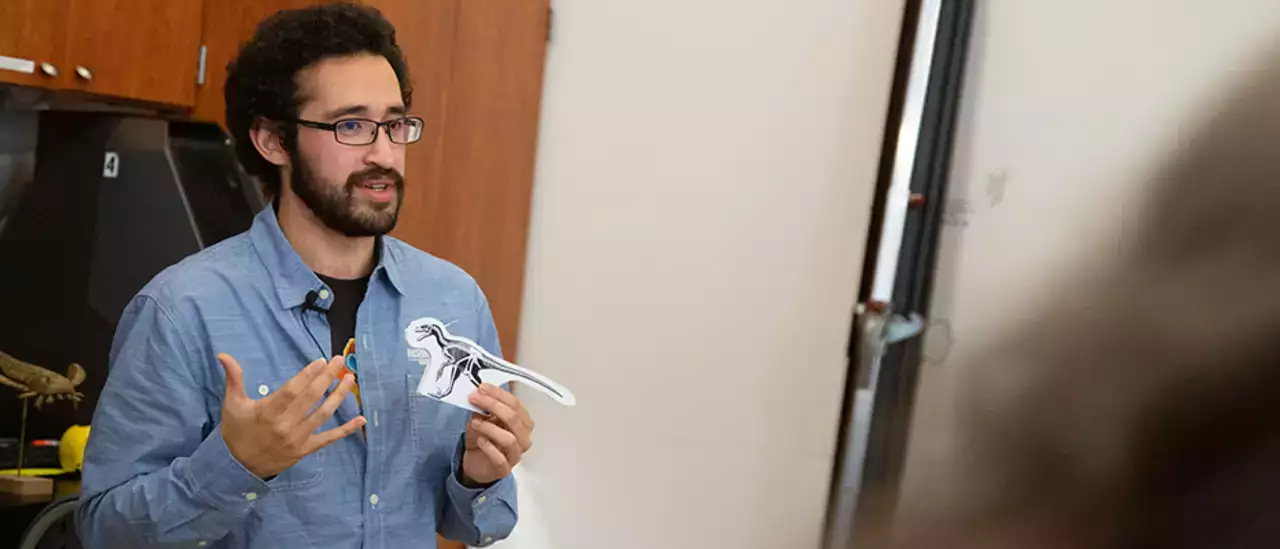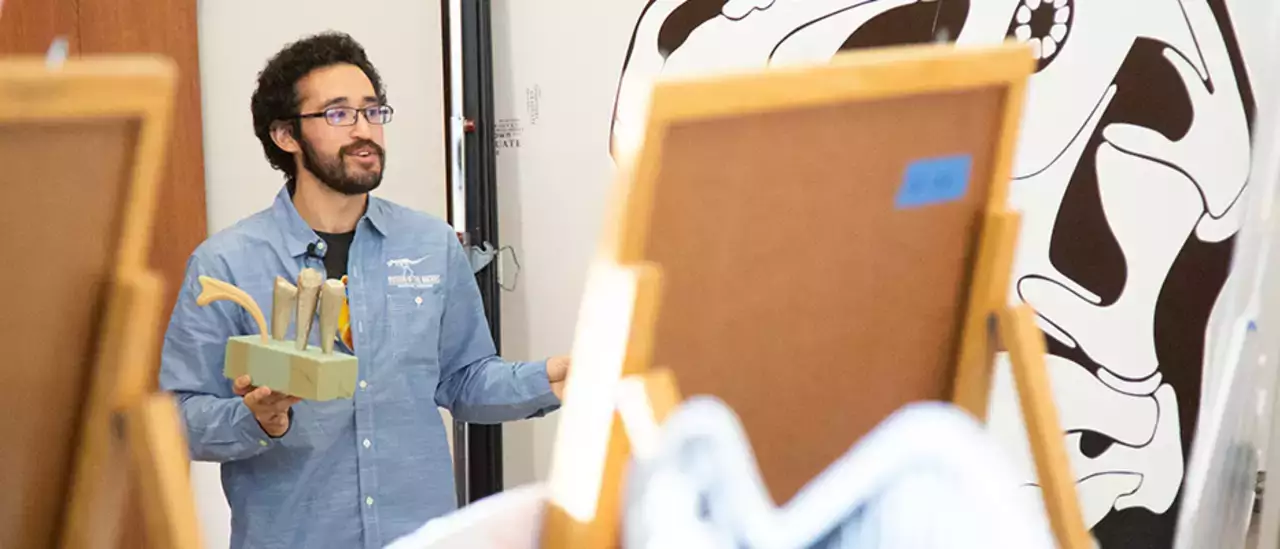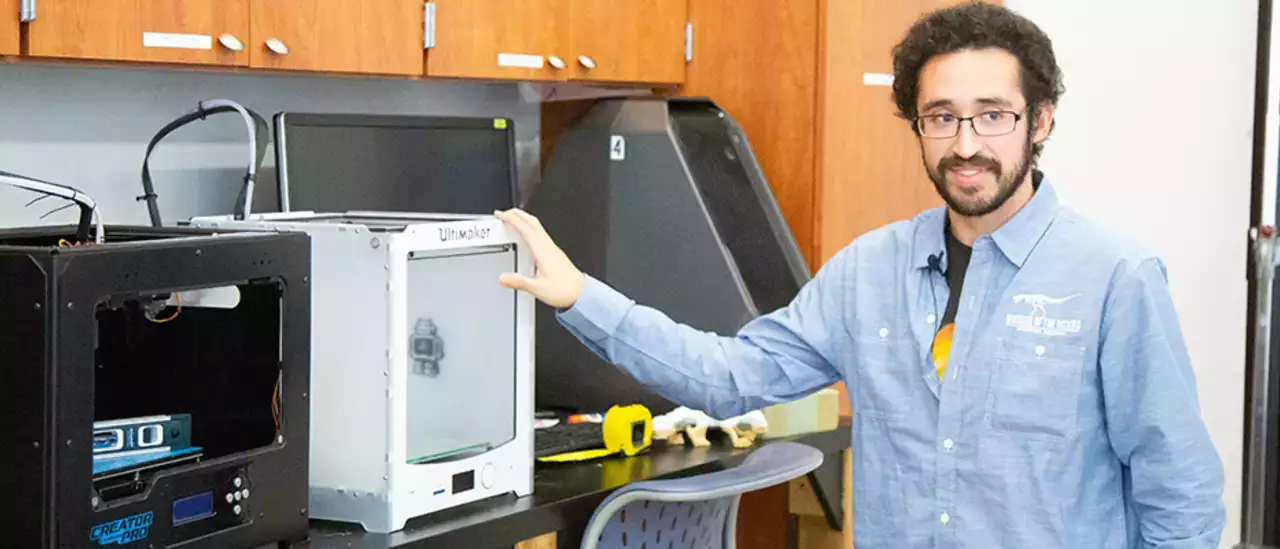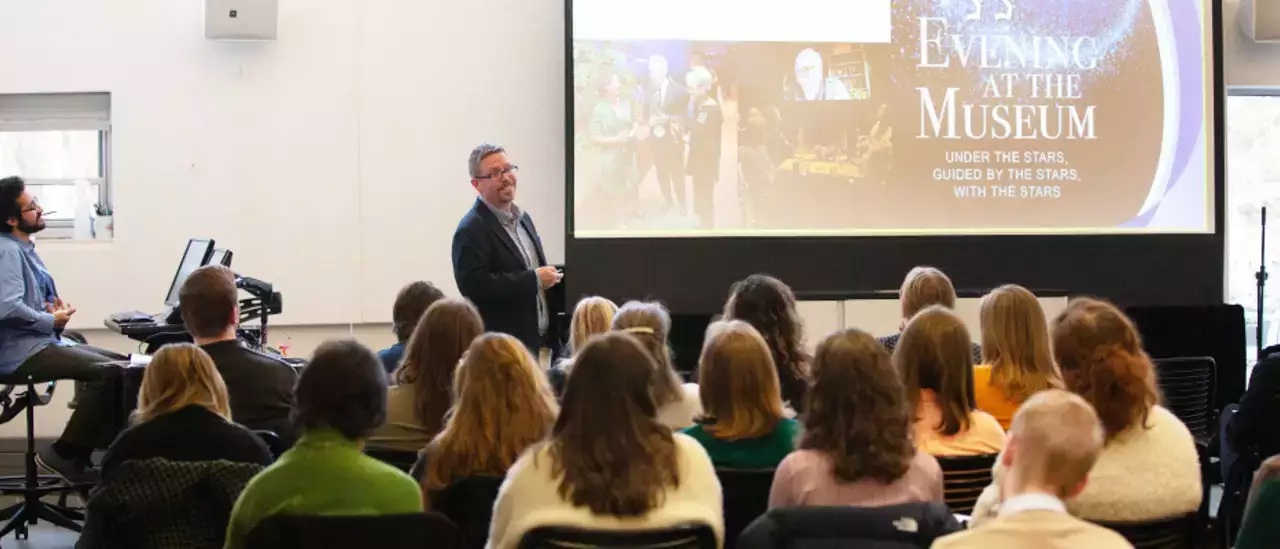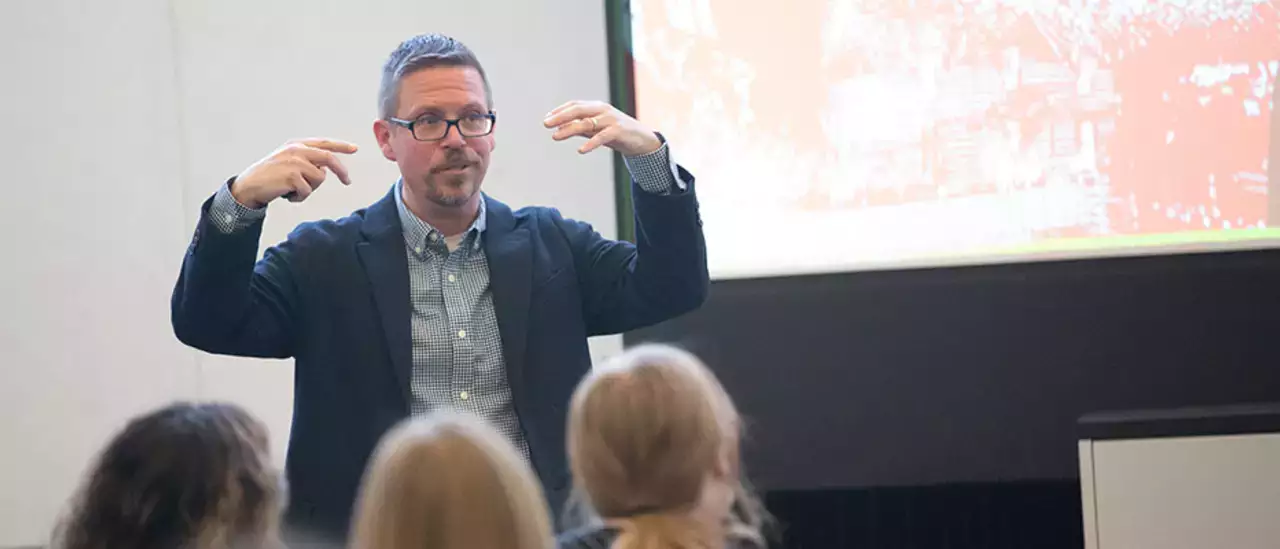Calen Cavallaro’s lifelong love of dinosaurs will reach new heights this summer, when the Museum of the Rockies opens a first-of-its kind Troodon exhibit that Cavallaro helped create during a summer internship.
Cavallaro, a second-year student in the Cooperstown Graduate Program’s Museum Studies science track, used a 3-D printer to create dinosaur bones based on fossil specimens during a summer 2023 internship at the Museum of the Rockies (MOR) in Bozeman, Mont. The internship resulted from a connection with MOR Executive Director Chris Dobbs, a 1998 CGP grad who recalls the impact of his own Museum Studies internship and wants to pay it forward.
“This dinosaur is particularly rare, it’s particularly fragile, and before this skeleton, there was no real, accurate skeleton of this dinosaur anywhere in the world,” Cavallaro said. “To know that I’ve helped build a dinosaur, that’s like a dream come true.”
From Dreaming to Doing
Originally from El Salvador, Cavallaro moved to the United States when he was very young and spent most of his life in Oregon, dreaming of becoming a paleontologist. He earned a B.S. in geology from the South Dakota School of Mines and Technology before changing course after volunteering at a local science museum that had a traveling dinosaur exhibit.
During his first year in the CGP, Cavallaro became interested in 3-D printing and used it to fabricate a science exhibit that included dinosaur teeth, claws and heads. That experience helped him land a summer internship at the MOR, where he met Dobbs. During the internship, Cavallaro spent half of his time educating museum visitors and half in the basement scanning fossils and 3-D printing bones.
Unearthed in Montana in 1855, fossil remains of the waist-high, bird-like Troodon were among the first discovered in North America. The raptor had brittle, hollow bones that didn’t leave many remains, making it difficult to study and replicate. The MOR had some rare bones but not enough for an exhibit, so Cavallaro was tasked with scanning the fossils and using a 3-D filament printer to create true-to-life resin bones. Originally the bones were to be part of a traveling research collection, but the project was scaled up for inclusion in a MOR exhibition called Cretaceous Crossroads, set to open early this summer.
A 60-Year Tradition
Cavallaro’s story is a testament to the interconnectedness of two of the Cooperstown Graduate Program’s greatest strengths – a curriculum based around applied learning and a large alumni network of successful museum professionals.
Experiential learning has been baked into the program since its inception in 1964. Sixty years later, the CGP has graduated hundreds of alumni who are now successful museum leaders and role models for current students.
In addition to a variety of local service projects and field experiences, CGP students are required to complete a summer internship. With alumni of the program working as museum leaders all over the country, students have a network that leads to valuable hands-on learning experiences, internship opportunities and jobs.
For example, CGP students curated an exhibit titled “Home Sick” on display at the Dyckman Farmhouse Museum in New York City, where 2017 CGP grad Melissa Kiewiet is the executive director. This spring, museum consultant Pieter Roos, a 1989 CGP grad, spent several weeks in Cooperstown as a visiting scholar and led a professional seminar on “Climate Change, Museums and Historic Preservation.”
Paying it Forward
As executive director of the Museum of the Rockies (MOR), Dobbs manages a world-class museum that is affiliated with Montana State University and draws more than 200,000 visitors a year. Best known for its paleo collection, MOR is an interdisciplinary museum with five exhibitions that change annually and the only planetarium that incorporates live theatre into its shows.
Dobbs fell in love with museum studies as an Indiana University history/pre-dental major whose parents had a summer home in upstate New York, which led him to work one summer at The Farmers’ Museum in Cooperstown. “I instantly fell in love with museums,” he said. “The idea of bringing the past to life, to engage all ages with history and culture -- I absolutely loved it and at that point I knew exactly what to do with my history degree.”
Dobbs recalls the impact of his own CGP internship, at the Hanford Mills Museum in Delaware County, and wants to pay it forward by hosting interns like Cavallaro, whom he calls “my future colleagues.” He credits the interdisciplinary curriculum of the CGP with giving him a solid foundation for his first job, as Supervisor of Special Interpretive Programs at Mystic Seaport in Connecticut, one of the largest outdoor history museums in the world.
“I wouldn’t be where I am if it wasn’t for the Cooperstown Graduate Program” Dobbs said. “You were able to focus on museum administration, museum education, curatorial, exhibits, conservation. It allows you to specialize in different areas, but it also forces you to have experience with all the other parts of the museum field. The fact that it’s interdisciplinary -- the science and history focus – and the alumni network… You’re getting all of that wrapped up in one program. It really can prepare you for a bright future in the museum field.”
Full Circle
Dobbs and Cavallaro got to see one another again in December 2023, when Dobbs visited the CGP campus for a daylong workshop on museum planning. Cavallaro wore his Museum of the Rockies button-down and showed Dobbs his latest 3-D printing projects. After presenting a public lecture on the history of beer making, Dobbs headed back to Montana to prepare for the next round of changing exhibitions, including Cretaceous Crossroads.
Cavallaro, meanwhile, is channeling his entrepreneurial spirit in another direction, working on a grant for a larger 3-D printer and planning a trip to Montana to see the Troodon exhibit in all its glory.
“To say that I helped put together an actual dinosaur skeleton based on actual fossils that will be going in exhibit at one of the coolest museums ever – and a very influential museum, too -- is going to be so cool,” Cavallaro said, “and I hope that I can see it this summer so I can point at it and say, ‘That foot? I made that. Wow.’”
